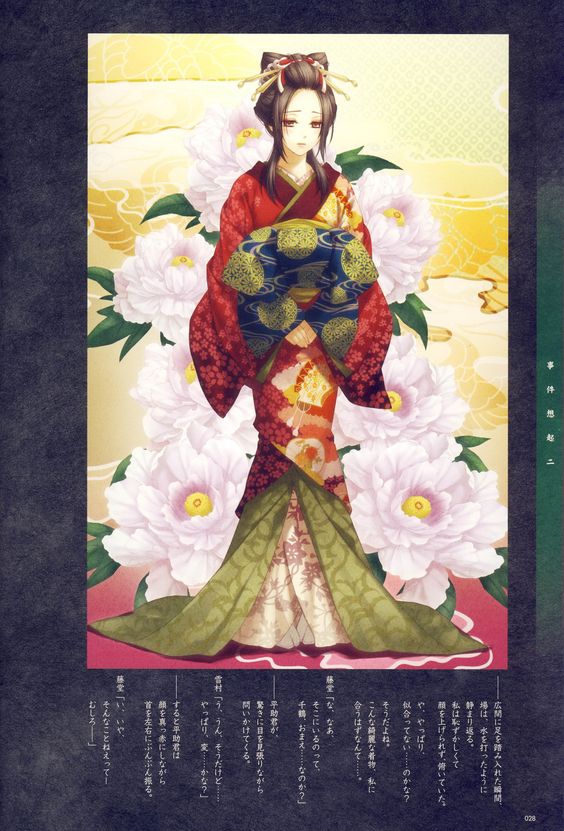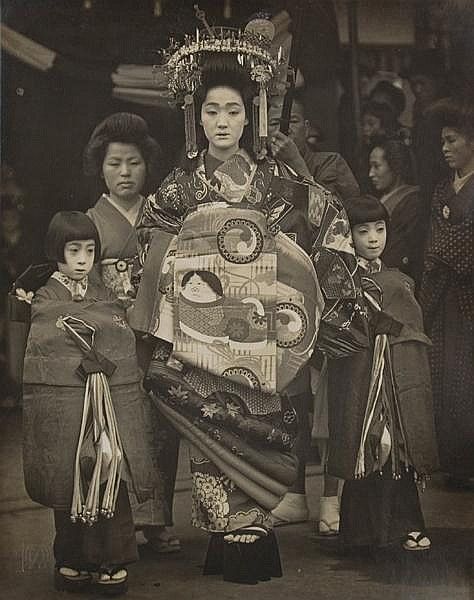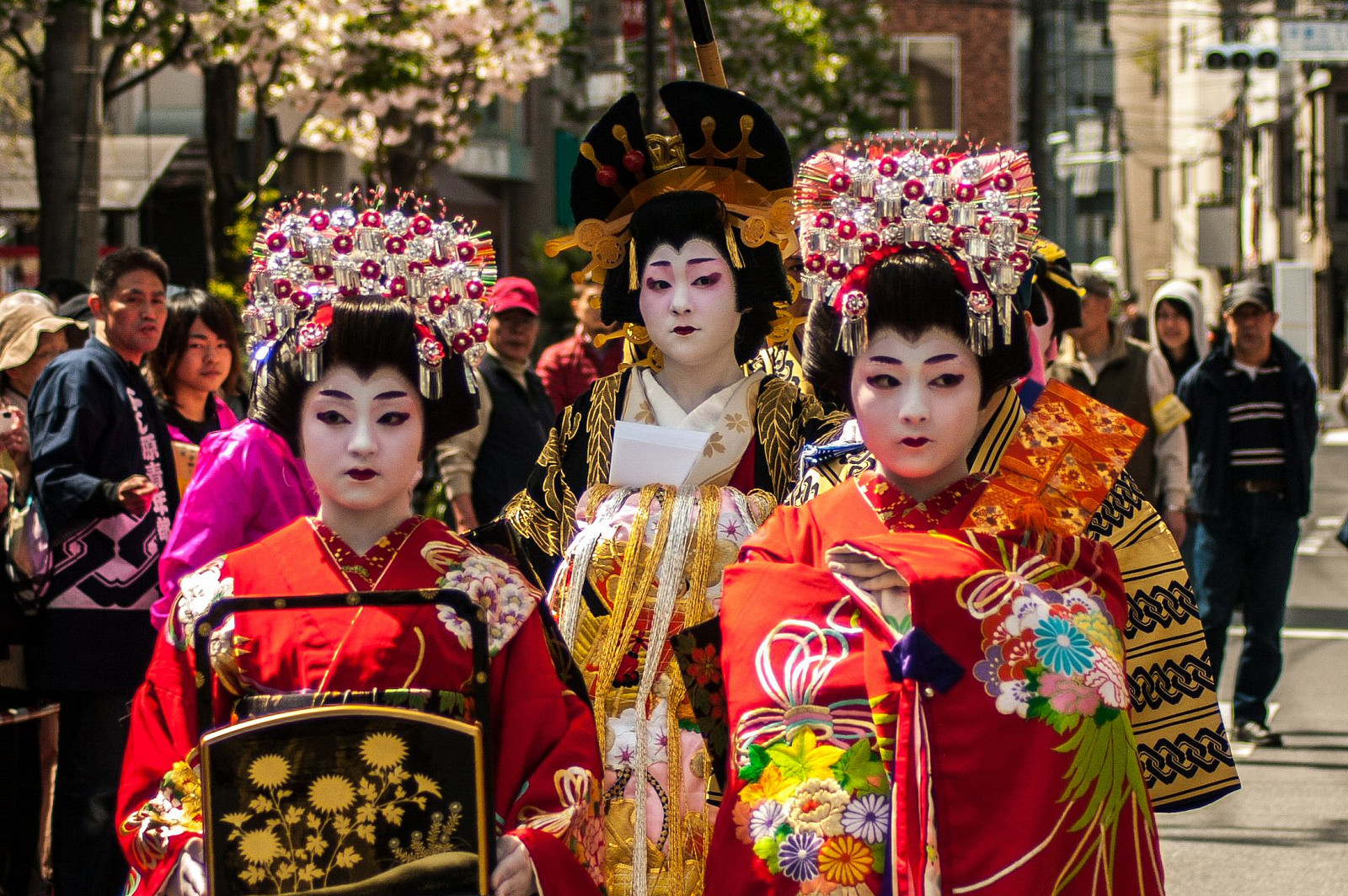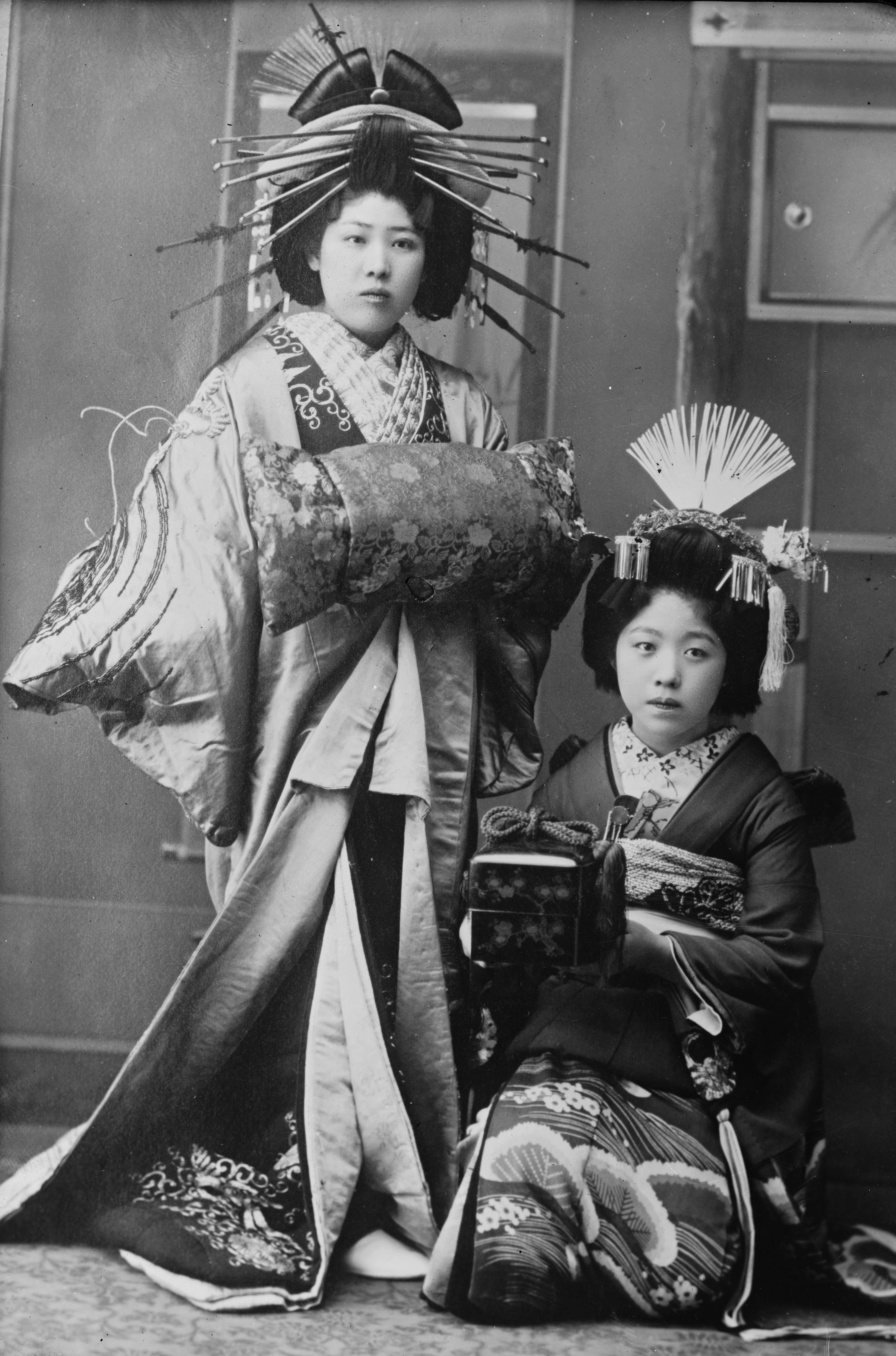Japanese Tradition: Oiran
Oiran
Courtesans that led fashion

photo credit: pinterest
In ancient Japan ‘women of pleasure’ were called Yūjo (遊女). This word identified their job and also marked the difference between common prostitutes and courtesans, also called Oiran (花魁). The figure of the Oiran is the one we will analyze in this article.
The word Oiran derives from the sentence ‘oira no tokoro no nēsan’ (おいらの所の姉さん) that means ‘My older sister’. However, the literal translation would also be ‘The leader of all flowers’ since it is written with the kanji of 花 (Hana) “flower” and the kanji of 魁 (Sakikage) “leader”. At first, the word referred to high-class prostitutes of the Yoshiwara district (吉原) in Edo, today’s Tokyo. But later it was used in reference to courtesans.

photo credit: pinterest
Oirans carried out their activities during the Edo period in pleasure districts called Yūkaku (that is not to be confused with the Hanamachi were only Geishas lived) . This districts were built outside the city center of Kyoto, Osaka and Edo, and were the only places were prostitution was legalized.
Unlike Yūjos, that sold their sexual favors, Oirans entertained their clients non only with their body but also with their abilities. These included the Sadō or the Tea ceremony, the Ikebana or the art of arranging flowers, being able to play different instruments, reading and having a good general knowledge. In fact, they had to be able to entertain the client also with their brilliant conversation skills.
The highest rank was that of the Tayū (太夫) that had the privilege to refuse a client if they wanted to. They were followed by Kōshi (格子). Their clients were part of the elite of the society like Daimyōs and rich feudal lords, and this was because the fee for a Oiran was very high. Just think that one night with an Oiran was equivalent to a whole year of a worker’s salary. To be able to meet one of them, clients had to be invited by the Oiran herself and had to enter a waiting list even weeks long.
The last official Oiran lived until 1761. The increasing popularity of Geishas made the request for Oirans decline. Nowadays this profession is not carried out anymore, if not with the meaning of preserving traditions and customs.
The most fascinating thing about Oirans is that due to the isolation they were forced into by the anti-prostitution law (prostitutes were to live in peripheral areas only) they were also idolized and mystified. They also led fashion and customs. They had the most peculiar hair-styles and the most rich and fancy kimonos with Getas (Japanese traditional shoes) fifteen cm high.

photo credit: tokyocheapo.com
Shinano, Sakura e Bunsui.
There are many events that celebrate these women during the year.
The first one, that takes place in April in the city of Tsubame, Hokuriku region, is the Bunsui Sakura Matsuri Oiran Dōchū. It is a parade famous throughout Japan were girls from different regions parade along the streets in order to obtain the role of one of the three leading Oirans : Shinano, Sakura and Bunsui. These names derive from the flowers of three different types of cherry trees. The girls parade ahead of a minimum of seventy different accompanying figures like Kamuros, their helpers, servants and concubines too. Each figure is selected every year with utmost care.

photo credit: wikipedia
In September in Shinagawa there is the Oiran Dōchū parade, and every early October in Nagoya, around the Ōsu Kannon temple, there’s the Ōsu Street Performers Festival were thousands of spectators can attend a two-days parade. Here Oirans walk down the shopping galleries of the Ōsu Kannon district with their whole entourage. Part of this entourage is the Yojimbo, similar to samurai but that actually has the role of a bodyguard, and there are apprentices too.
Charming, sensual and mysterious, like everything is in Japan, women of thousands faces and talents, beauty of an ancient time.
Share this:
- Click to share on Facebook (Opens in new window)
- Click to share on Twitter (Opens in new window)
- Click to share on Tumblr (Opens in new window)
- Click to share on Pinterest (Opens in new window)
- Click to share on Telegram (Opens in new window)
- Click to share on WhatsApp (Opens in new window)
- Click to share on Reddit (Opens in new window)
- Click to print (Opens in new window)






